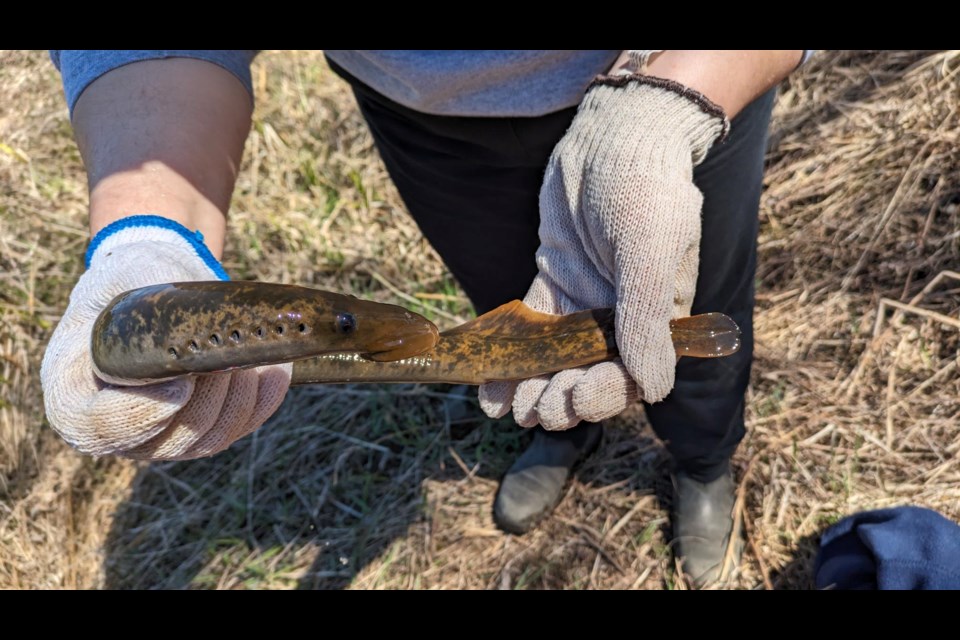THUNDER BAY — Recent funding and staffing cuts at the U.S. Fish and Wildlife Service. have raised concerns in Canada about invasive lamprey population.
Sea lamprey control is managed binationally by the Department of Fisheries and Oceans in Canada and the U.S. Fish and Wildlife Service.
“We're going to have huge problems in very short order on our Great Lakes,” warned Michael Rennie, Canada Research Chair in Freshwater Ecology and Fisheries at Lakehead University. “If there are major shortages in staffing and resources, the sustainability of our native fisheries is at risk and everyone should be concerned.”
“The success of our program has always been because of strong partnerships and a border-blind attitude,” Greg McClinchey, director of policy and legislative affairs for the Great Lakes Fishery Commission (GLFC). “Lampreys don’t carry passports, they go where the food is. And that means we have to fight them where they are.”
In February, a series of decisions in the U.S. federal government terminated all Fish and Wildlife employees with probationary status and implemented a hiring freeze — this meant the agency couldn’t bring on seasonal staff as usual, McClinchey said. These setbacks hit a program already operating with minimal resources.
“Nobody in the administration or Congress woke up and said, ‘I hate the Great Lakes. I'm going to be on Team Lamprey,’” McClinchey commented, acknowledging the unintended consequences of the cuts.
Thanks to stakeholder pressure and scientific advocacy, emergency measures were enacted to hire additional seasonal workers and restructure treatment schedules, salvaging much of the 2025 control season, said McClinchey.
"We lost some pretty critical weeks, about five weeks, to be exact. However, we managed to get things back on track. They allowed the Fish and Wildlife Service to hire seasonal employees, and the administration even made the decision to hire extra help to compensate for that lost time," he said.
In 2024, the DFO installed a permanent sea lamprey trap in the Neebing River near Edward Street, strengthening long-term efforts to manage invasive species in the Great Lakes.
This permanent installation replaces earlier temporary structures and reflects a broader strategy that includes monitoring and data collection in partnership with the Lakehead Region Conservation Authority (LRCA).
Efforts to manage sea lampreys suffered a major setback during the COVID-19 pandemic, when treatment programs were paused.
McClinchey called it a “forbidden experiment” that confirmed long-held fears. The lapse resulted in an estimated $2 billion in economic and ecological losses, significantly impacting both commercial and recreational fishing industries.
“During COVID, we did see the number of sea lampreys go up because there was no treatment schedule going around,” said McClinchey,
"Anglers began reporting more fish with lamprey wounds, and in some regions, populations surged by up to 300 percent."
Thunder Bay currently operates two traps: the new permanent trap in the Neebing River and a seasonal trap at the Tamblyn site on Lakehead University property. The traps are active for six to eight weeks each spring, aligning with colder water temperatures that prompt sea lampreys to migrate upstream for spawning.
Captured lampreys are tagged and released as part of a mark-recapture program used to estimate population sizes and track movement. Lampreys from the Neebing trap are marked on the first dorsal fin, while those from Tamblyn are tagged on the second.
Originally native to the Atlantic Ocean, sea lampreys entered the upper Great Lakes in the 20th Century through the Welland Canal, which bypasses Niagara Falls, a natural barrier. Once established, they fed parasitically on large native fish such as lake trout, whitefish, sturgeon, and walleye, leading to devastating impacts.
Their arrival contributed to the collapse of regional fisheries in the mid-1900s.
“The lampreys invading from the lower lakes was the straw that broke the camel’s back, especially in Lake Superior,” said Rennie.
In addition to traps and chemical lampricides, the control program uses electric barriers, portable traps, and the release of sterile males to reduce successful spawning. The Great Lakes Fishery Commission also publishes an annual treatment schedule to coordinate efforts across the region.
As these efforts continue, McClinchey said Thunder Bay’s expanded trapping infrastructure is playing a vital role in protecting the ecological and economic health of the Great Lakes.
